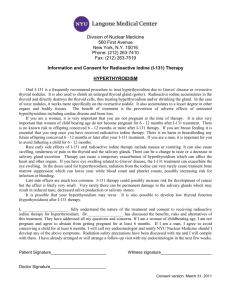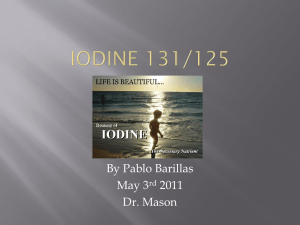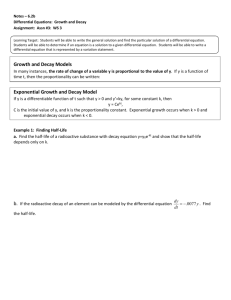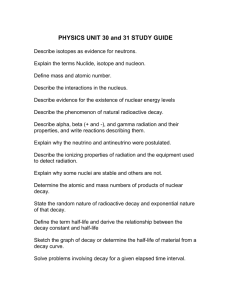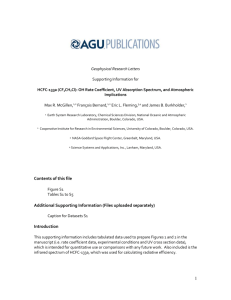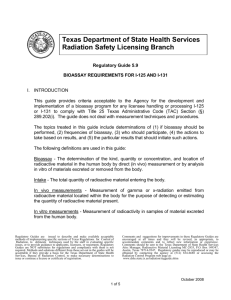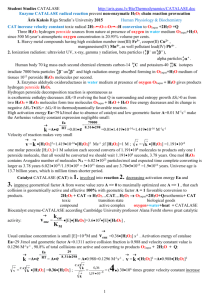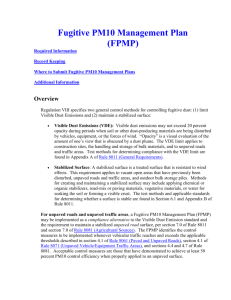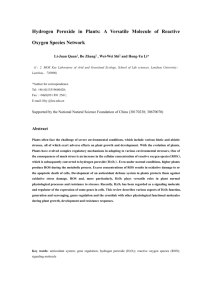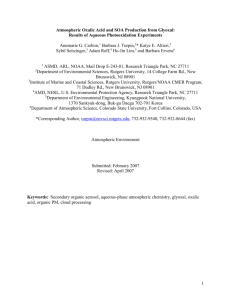Unit 1 – Atomic Theory and Structure
advertisement
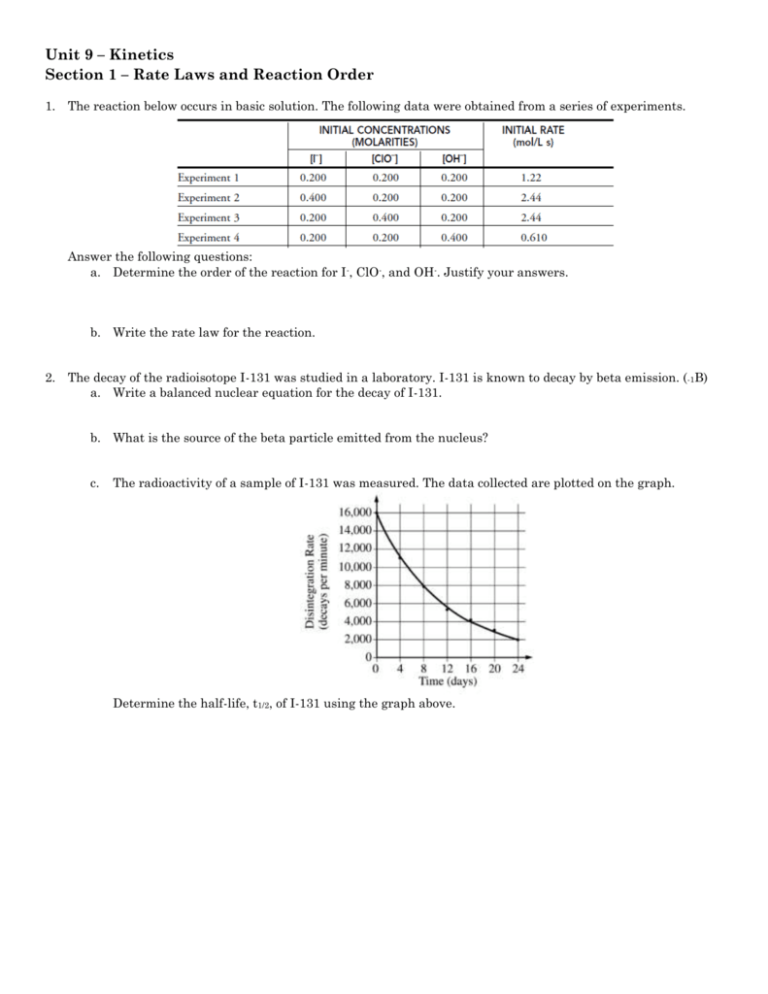
Unit 9 – Kinetics Section 1 – Rate Laws and Reaction Order 1. The reaction below occurs in basic solution. The following data were obtained from a series of experiments. Answer the following questions: a. Determine the order of the reaction for I-, ClO-, and OH-. Justify your answers. b. Write the rate law for the reaction. 2. The decay of the radioisotope I-131 was studied in a laboratory. I-131 is known to decay by beta emission. (-1B) a. Write a balanced nuclear equation for the decay of I-131. b. What is the source of the beta particle emitted from the nucleus? c. The radioactivity of a sample of I-131 was measured. The data collected are plotted on the graph. Determine the half-life, t1/2, of I-131 using the graph above. d. The data can be used to show that the decay of I-131 is a first-order reaction, as indicated on the graph below. i. Label the vertical axis of the graph. ii. What are the units of the rate constant, k, for the decay reaction? iii. Explain how the half-life of I-131 can be calculated using the slope of the line plotted on the graph. e. Compare the value of the half-life of I-131 at 25 ˚C to its value at 50 ˚C. 3. Hydrogen peroxide decomposes according to the following equation: 2H 2O2(aq) 2H2O(l) + O2(g) a. An aqueous solution of H2O2 that is 6.00 percent H2O2 by mass has a density of 1.03 g/mL. Calculate each of the following. i. The original number of moles of H2O2 in a 125 mL sample of the 6.00 sample of the 6.00 percent H2O2 solution. ii. The number of moles of O2(g) that are produced when all the H2O2 in the 125 mL sample decomposes. b. The graphs below show results from a study of the decomposition of H 2O2. i. Write the rate law for the reaction. Justify your answer. ii. Determine the half-life of the reaction. iii. Calculate the value of the rate constant, k. Include appropriate units in your answer. iv. Determine [H2O2] after 2,000 minutes elapse from the time the reaction began.
